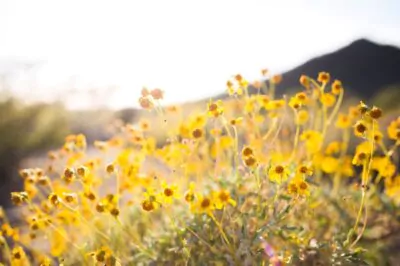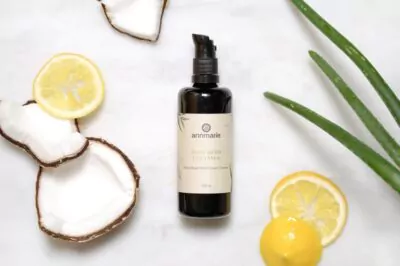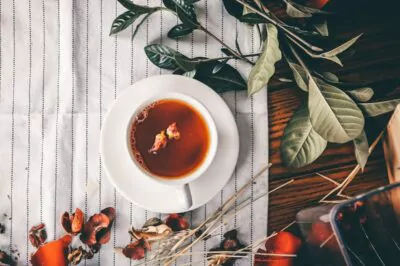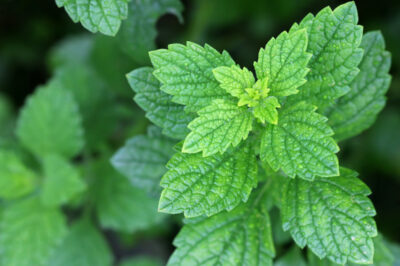Table of Contents[Hide][Show]
- 1—Things are not always as they first appear.
- 3—Things happen exactly when they’re supposed to.
- 4—Vulnerability expressed openly is as beautiful as strength.
- 5—Change is good.
- 6—Put down deep roots, and you can handle anything.
- 7—A willingness to adapt will be what saves you when it gets hard.
- 8—We need each other to thrive.
- 9—Humble resilience is underrated.
- 10—Exercise Selflessness.
- 11—Failure is never as permanent as it seems. Regrowth is always possible.
“Look deep into nature, and then you will understand everything better.” -Albert Einstein
While we were on a short hike with our two kids in Italy, Basil (our 3 yr old daughter) handed me a “special rock” that she had picked up from the driveway. I have a generous collection of special rocks from her–she hands them to me almost daily. Some big, some small, some gray, some red, I think one might even be a piece of broken cement. I can’t bring myself to drop them back to the ground, so I keep them and I’ve come to love each and every one of them.
The one she had just handed me looked like the last gray one she found for me–small, rock-like and, well, gray. But as I held it in my hand, she told me to look all around it. So I did. And when I turned it around she must have seen my face light up a bit. The underside of the stone revealed that it had been broken in two and inside was a beautiful white, speckled marble–a marble we’d been seeing in the sculptures all around Tuscany.
I was ready to just put it in my pocket, mentally mark it as just another rock, but Basil was paying attention. To her, she said, this was the most beautiful rock she’d ever seen. To me, it was a reminder how awe-inspiring our earth can be–even when initially it seems as if nothing is there.
Today as we celebrate not only us, the ASC Beauties who are mothers (you’re amazing BTW!), let’s also celebrate the ever-present, ever-giving, ever so beautiful Mother Nature. We never cease to be awed by what we can learn from her if we just pay attention.
Here are 11 lessons we can learn from Mother Nature:
1—Things are not always as they first appear.
Like that rock in Italy, or a piece of petrified wood– the outside might not look like anything special, but the inside can be the most beautiful thing you have ever seen.
At times we can be quick to judge before we even understand where someone is coming from, what their story is. Practice kindness, be gentle in your thoughts and take your time getting to truly know someone on the inside.
2—Just because something has been labeled as one thing doesn’t mean it can’t be another.
Humans have long been plumbing the stores of Mother Nature for nourishment, and we’re still discovering (or re-discovering) hidden benefits—sometimes in our own backyards. It may just be that a plant you’ve been told is for whacking or for potting, can also be a delicious source of nourishment. For example, these three edible plants may surprise you:
Dandelion
This fluffy, flowering weed is good for more than just granting wishes. Its leaves, yellow flowers, and roots are not only edible, but full of super-food-like goodness, including Vitamin A, Vitamin C, and calcium.
Chickweed
Often seen as a ground cover plant in gardens or growing naturally, chickweed’s stems, leaves, seeds, and flowers are edible. It’s a great source of Vitamin A, ascorbic acid, calcium, potassium, and zinc.
Lavender
Most people think of lavender for its relaxing scent or its pretty purple color, but the plant’s leaves and flowers are edible and provide loads of calcium, iron, and Vitamin A.
We’re all guilty of believing sometimes we (or someone else) are supposed to fit inside a neat box that can be labeled simply. But let’s take a cue from Mother Nature and remember: We’re so much more than that.
8 Ways to Get Your Self Care on This Earth Day
Forest Bathing 101: What is it and the 6 Benefits for Your Body
Wild. Annmarie.
3—Things happen exactly when they’re supposed to.
Mother Nature is working on a timeline that seems carefully orchestrated, complex, and maybe even divine. Young green shoots spring up at just the right moment each spring. Trees drop their leaves like clockwork in the fall. Flowers bloom exactly when they’re ready. Because of the impeccable timing of Mother Nature, our earth has sustained its cycle of life for millennia. It’s easy to see how futile it would be to get impatient about when the seasons will change—we don’t have any control over it, nor would we want to. Mother Nature will ensure everything happens exactly when it’s supposed to.
How freeing would it be to apply this thinking to our own lives? After all, we are part of this Earth as much as the wildlife. Take a breath, be patient. Things will happen when they’re supposed to.
4—Vulnerability expressed openly is as beautiful as strength.
Some of nature’s most beautiful creations are also its most vulnerable. Consider the Yellow Lady Slipper or the Jade Vine, two plant species that are considered endangered due their low numbers and high vulnerability. With the Yellow Lady Slipper’s gorgeous, unique yellow flowers and the Jade Vine’s minty-green, thick leaves, both plants are stunning. And, both are highly coveted, due to their rarity. In the natural world, it’s a given that beauty is enhanced when its vulnerability is made known.
The same can be said for us. When we’re open about what makes us vulnerable (or, in other words, human), our natural beauty shines brighter.
5—Change is good.
Change, from our limited perspective, can be a serious source of anxiety. Looking to Mother Nature reminds us that change happens constantly, and it’s necessary, not scary. Roses go dormant half the year. Trees bear fruit which falls and is eaten. Organic matter decomposes. And then the rosebush blooms again, the seeds from the fruit spring up into young trees, and the soil is nourished for new growth. It’s soothing to, during times of uncertainty or change, remind ourselves that it isn’t some big, scary event—it’s natural and positive.
6—Put down deep roots, and you can handle anything.
People often think that the secret to a tree’s stability is its trunk. But a tree would literally not survive without its complex, deep root system. The roots anchor the tree into the ground as it grows, protect it from soil erosion, and provide it with vital nutrients and water—and the same goes for all plants. In fact, it’s said that half a plant’s life is underground.
We like to think of our “roots” as our inner lives, the part of us that is responsible for how open we are to others, what we feed our minds with, and how we respond to conflict. When we put in the work and develop deep, healthy inner lives first, we set ourselves up to thrive and grow in all areas.
7—A willingness to adapt will be what saves you when it gets hard.
Plants have developed a slew of strategies to combat deathly conditions like serious drought. Many plants have mechanisms that kick in at the first sign of drought to conserve water (like a process known as osmotic adjustment) or have adapted over time to survive in conditions chronically deprived of water (like the cactus and its waxy, water-storing leaves).
We can look to nature for encouragement for coping when a situation feels dire or unsustainable—just like plants that survive a drought, our ability to adapt is innate. We will find a way to get through anything.
8—We need each other to thrive.
Biodiversity is extremely important to the survival of an ecosystem. Consider for example a simple food chain. If one key member of a food chain were to disappear, whether it be a predator at the top or an earthworm, the whole system would be likely to collapse. The animals eaten by the predator would grow too large in number and consume too many of the system’s resources; the earthworm would no longer be there to improve the fertility of the soil, and plant life would start to dwindle. And the destructive cycle would continue.
As humans, we need each other to thrive, too, though sometimes we forget. We rely on each other not only for our different skillsets (an artist hires an accountant, who hires a doctor, and so on), but for psychological benefits as well. Studies have shown that when we’re deprived of connection, we suffer, just as we would without food or water. Observe your social “ecosystem.” Take note of how valuable each person you encounter is to your, and our, survival.
9—Humble resilience is underrated.
Consider grass for a moment. It’s generally not thought of as beautiful, and it gets trampled on day after day. But though its leaves may bend, they always spring right back up. It’s resilient. It flaunts nothing.
In our own lives, we should take a cue from grass and strive to embody this humble resilience, never staying down for long.
10—Exercise Selflessness.
Mother Nature is intrinsically selfless. She gives every part of herself for some function to keep the earth goin’ round. She becomes shelter, food, or protection for every living creature on Earth—without asking for anything in return.
Just noticing the selflessness of Mother Nature makes us realize how we could do better. We should ask ourselves who we’ve neglected to help because it might have been inconvenient for us.
11—Failure is never as permanent as it seems. Regrowth is always possible.
When a forest fire consumes acres and acres of a healthy ecosystem, the resulting patch of charred, dead tree stumps and burned grass looks like it’ll never recover to its original glory. But it does. The hidden, still-living parts of the plants are waiting just under the ground to capture sunlight and begin the process of regrowth. Within weeks, the first signs of young plants appear!
There will be times in our lives when it feels like we’ve been knocked down too completely to ever get back up. But we should know better: right below the surface, there’s a new start just waiting to burst through into the light.
Happy Mother’s Day!
Sources:
https://www.moneycrashers.com/eating-dandelions-health-benefits-leaves-greens-roots-flowers/
https://sunwarrior.com/healthhub/11-health-benefits-of-dandelion-leaves-and-dandelion-root
http://www.eattheweeds.com/chickweed-connoisseurs-2/
https://www.livestrong.com/article/500806-what-are-the-benefits-of-eating-lavender/
https://www.treeservicesmagazine.com/arborist-gear/hauling-lifting/root-systems/
https://link.springer.com/chapter/10.1007/978-3-642-32653-0_8
https://www.nationalforests.org/our-forests/your-national-forests-magazine/how-trees-survive-and-thrive-after-a-fire
http://www.globalissues.org/article/170/why-is-biodiversity-important-who-cares
https://www.scientificamerican.com/article/why-we-are-wired-to-connect/







